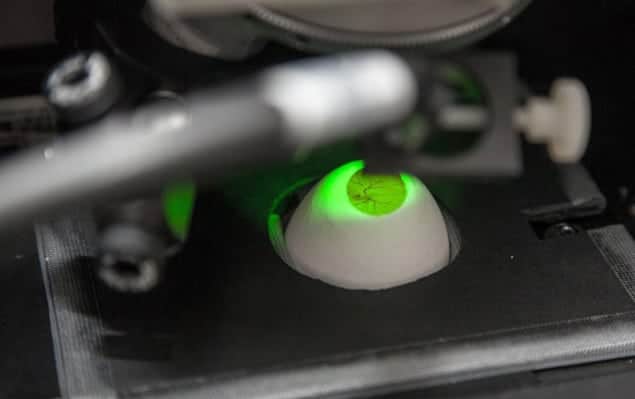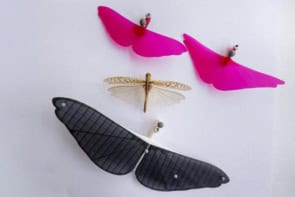
A method of using spectroscopy to determine the sex of a chicken egg before it hatches is being developed by researchers at the Dresden University of Technology and the University of Leipzig, in Germany. The technique – which will soon be applied commercially – could provide an alternative to the routine hatchery practice of killing male chicks shortly after birth.
In the rearing of egg-laying chickens, around half of all chicks born in poultry farms are considered commercially unviable because they are male. As well as being unable to lay eggs, the male chicks are of a breed optimized for egg laying rather than meat production and therefore not used as a food source. As a result, they are culled after birth, with their remains being used for other purposes, such as the production of animal feed.
In the UK alone, it is estimated that around 30–40 million chicks are culled each year. Worldwide, the count is in the billions annually. Similar culling practices are also employed commercially with other poultry – including male turkey poults and female ducklings, as the latter gain less weight than their male counterparts, making them less suitable for the production of foie gras. In the UK, chicks are gassed to death or fed to reptiles and birds of prey. In other countries they are often shredded alive in industrial grinders.
No nerve cells
Gathering together a multidisciplinary team of chemists, engineers, veterinarians and physicists, the work of Dresden’s Gerald Steiner and colleagues may offer a more humane alternative – sexing the chicks before they have hatched, after three days of incubation. At this stage, an embryo’s blood vessels will have formed, Steiner explains, “but not the nerve cells, so they can’t feel pain”. The researchers believe that it is more ethical to cull the chicks at this point in their development.
To determine the chick’s gender, the researchers first use a laser beam to cut a small, circular hole at the top of the egg. Next, near-infrared spectroscopy is used to determine the sex of the embryo based on its DNA content – which is around 2% higher in male chicks. “To the naked eye, we can’t see the difference between male and female embryos, but the computer can – if it’s programmed to do so,” says Steiner.
Patched up
Having refined their technique over time, the team are now able to sex each egg, with 95% accuracy, in less than a minute. If an egg is determined to contain a female chick, the laser-cut hole is patched up with adhesive tape and returned to the incubator – where it can then hatch. Eggs containing male chicks can be disposed of. In the future, the researchers say, a use may also be found for the discarded male embryos – such as in fish food, or shampoo.
Having proven the principle of the technique, the hope now is to develop machines to carry out the sexing automatically on an industrial scale. In Germany, the outcome of the work is keenly anticipated. Public concern over animal welfare has encouraged the government to spend €3 million towards developing research that supports the voluntary phasing out of chick-shredding by 2017.
“Although it would be a step forward if male chicks were no longer gassed or shredded alive, this would certainly not make eggs an ethical product,” comments Isobel Hutchinson, a campaign manager at the British animal rights organization Animal Aid. She adds: “The killing of male chicks is just one disturbing aspect of an unthinkably cruel industry.”



